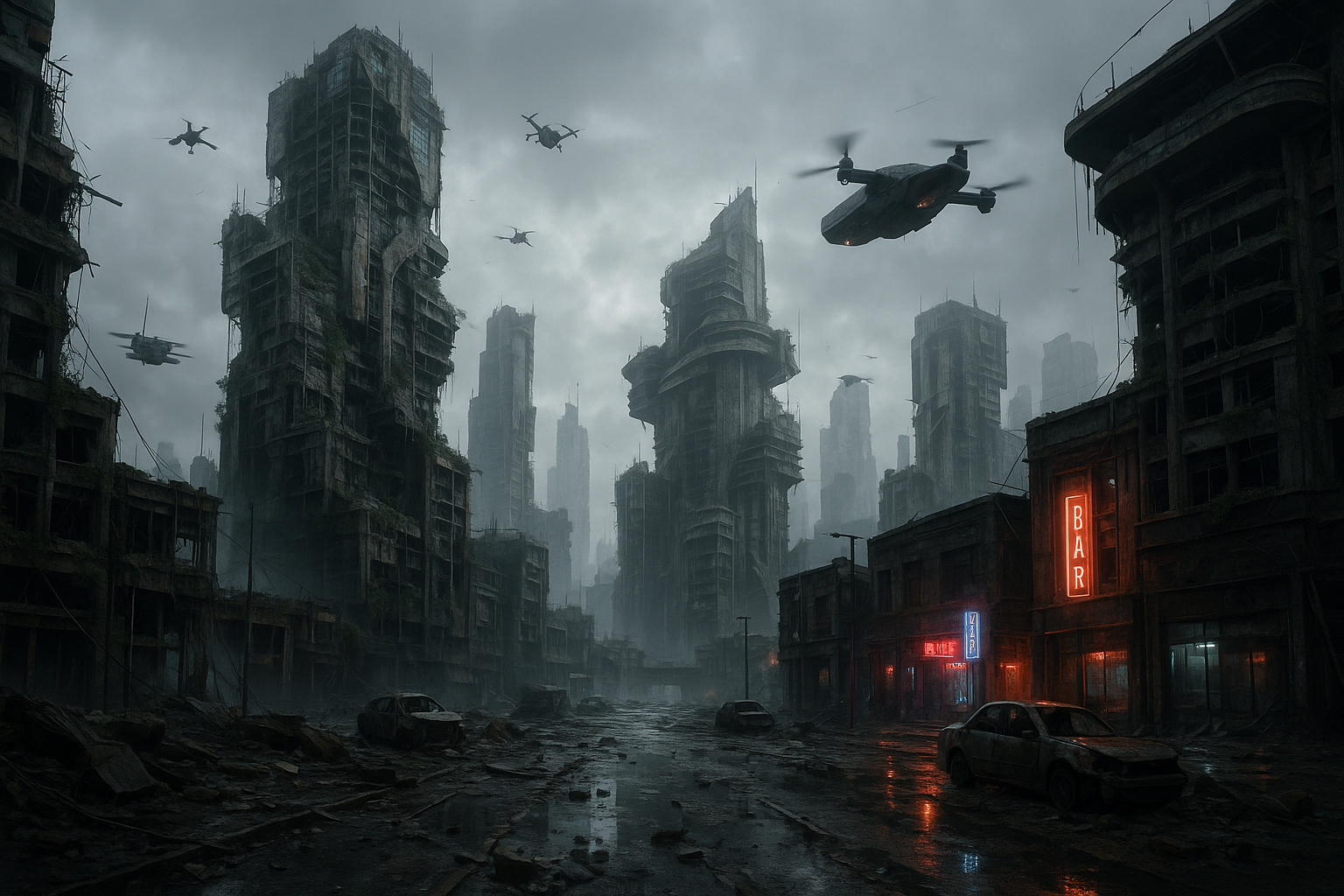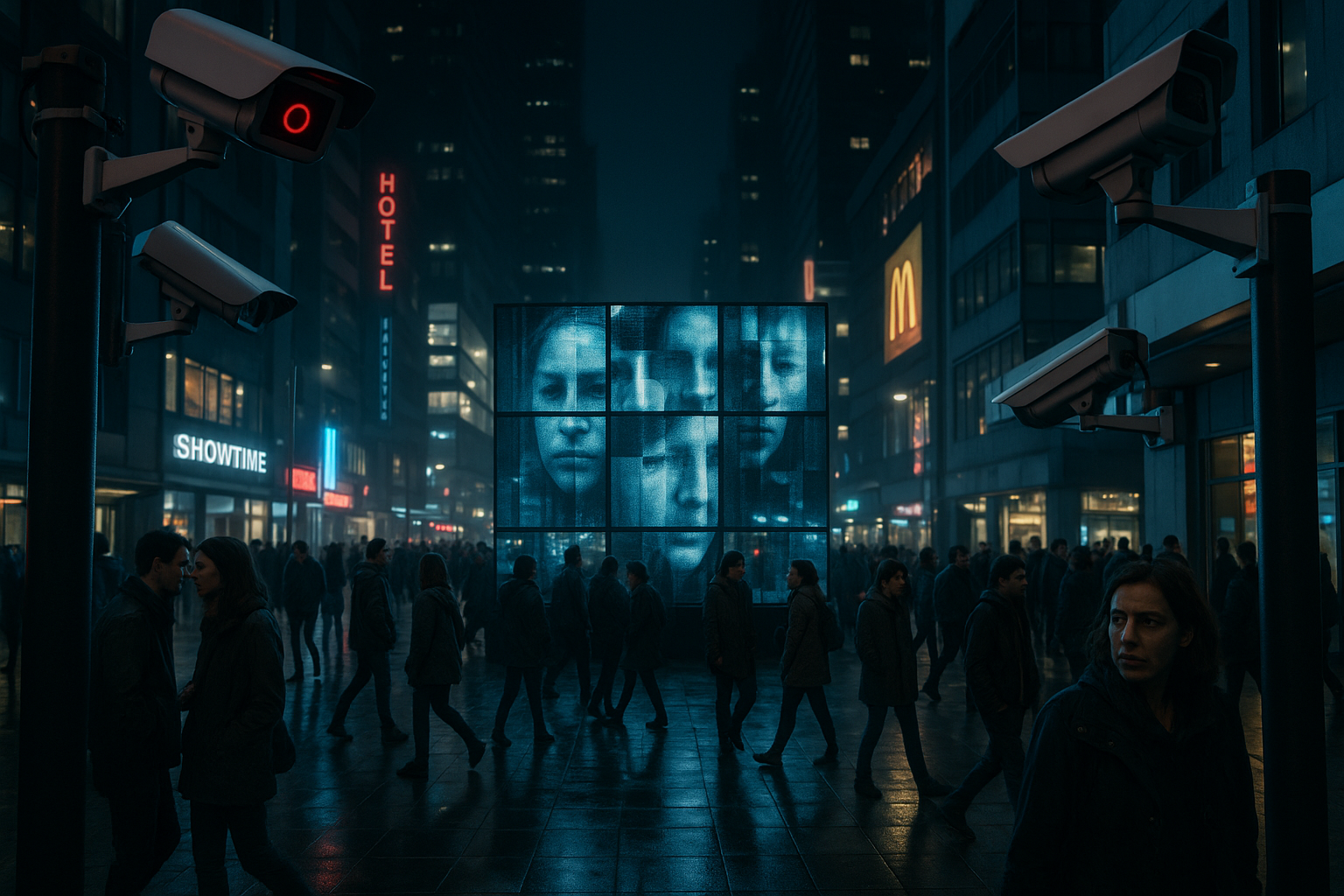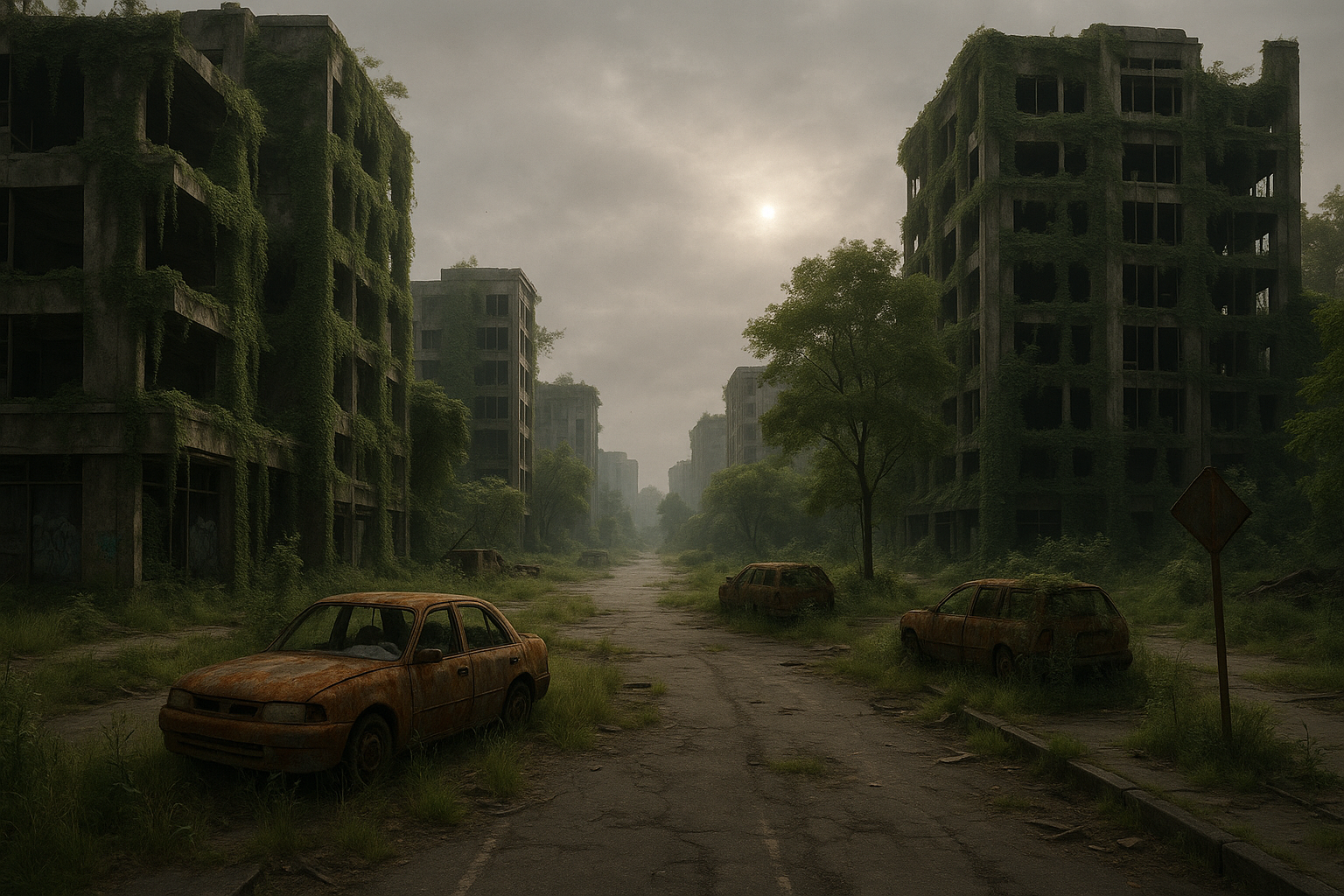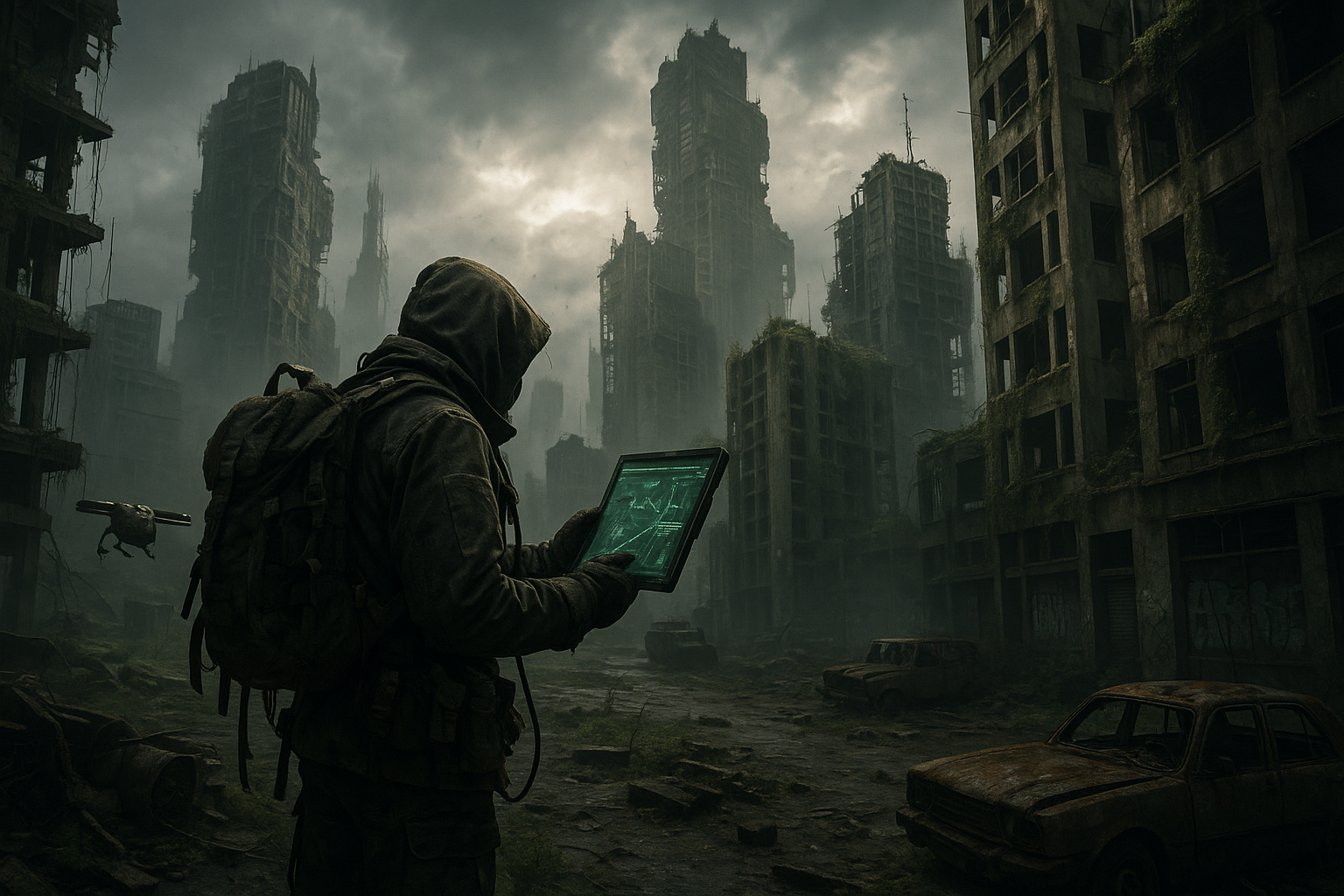Anúncios
In a world increasingly dominated by fast-paced technological advancements and digital innovation, there exists a fascinating trend within the realms of magazines, music videos, and advertising campaigns: the allure of dystopian aesthetics. This dark, often surreal visual style captivates audiences, drawing them into a universe where reality blurs with imagination, and societal critiques emerge from the shadows. But what is it about these dystopian dreams that captures our attention so effortlessly? Is it the grim landscapes, the haunting melodies, or perhaps the thought-provoking narratives that leave us yearning for more? 🤔
Anúncios
As we navigate through a sea of vibrant and often overwhelming media content, dystopian visuals stand out as a stark contrast, offering a momentary escape into worlds that are both unnervingly familiar and intriguingly foreign. Magazines have harnessed this power, using dystopian themes to challenge societal norms and provoke introspection among readers. With striking photography and bold graphic design, these publications push boundaries, encouraging audiences to question the status quo and consider alternative futures. The art of storytelling through visual media takes on new dimensions when dystopian elements are introduced, providing a canvas for exploring complex issues such as climate change, authoritarianism, and the human condition.
Anúncios
In the realm of music videos, artists are no strangers to the seductive pull of dystopian imagery. These short, powerful visual narratives often serve as extensions of the songs they accompany, enhancing lyrical themes with striking visuals that linger in the minds of viewers long after the music has stopped. Whether it’s a post-apocalyptic landscape or a futuristic society devoid of individuality, music videos use dystopian elements to amplify emotional impact and convey messages that resonate on a deeper level. By crafting these darkly compelling stories, musicians not only entertain but also inspire reflection on contemporary social and political issues.
Advertising campaigns have also embraced the dystopian trend, leveraging its visual intensity to captivate audiences and drive consumer engagement. In a marketplace saturated with similar products and messages, brands are increasingly turning to dystopian themes to differentiate themselves and create lasting impressions. Through cinematic storytelling and innovative design, these campaigns tap into the collective consciousness, evoking emotions and sparking conversations that extend beyond the products themselves. By exploring the darker sides of our imaginations, advertisers can forge connections with consumers who crave authenticity and are drawn to narratives that challenge conventional thinking.
Throughout this exploration of dystopian dreams, we will delve into the various ways in which these dark visuals are employed across different media platforms. From analyzing iconic magazine spreads and groundbreaking music videos to dissecting revolutionary advertising campaigns, we will uncover the techniques and strategies that make dystopian aesthetics so irresistible. Moreover, we will examine the cultural and psychological factors that contribute to our fascination with these themes, pondering what they reveal about our desires, fears, and hopes for the future. Join us as we embark on this journey through the shadowy yet mesmerizing world of dystopian dreams, where every image tells a story and every story invites us to dream a little deeper. 🌌
Introduction to Dystopian Themes in Visual Media
The allure of dystopian visuals in media has captivated audiences across the globe. These dark and often foreboding images present a world that is both intriguing and cautionary, drawing viewers into a narrative that speaks to contemporary societal fears and fascinations. From the gritty landscapes seen in fashion magazines to the haunting sequences in music videos, the dystopian aesthetic resonates powerfully with modern audiences, offering both a reflection of current anxieties and an escape into a world that, while grim, is tantalizingly complex.
Dystopian themes are not new; they have roots in literature dating back centuries. However, their adaptation into visual media, particularly in the realms of fashion and music, has provided a fresh platform for these narratives to evolve. The synergy between visuals and thematic content creates a potent mix that can challenge perceptions and provoke thought. This marriage of imagery and message is perhaps most effective when considering the sensory engagement of visuals; a single image can evoke emotion, set a mood, and tell a story.
Dystopian Aesthetics in Magazines
Magazines have long been a canvas for showcasing the latest in fashion and culture, but in recent years, dystopian themes have increasingly found their place within these glossy pages. These visuals often feature muted colors, stark contrasts, and scenes that evoke a sense of unease or otherworldliness, effectively capturing the imagination of readers and challenging them to see the world through a different lens.
The impact of these visuals is significant, as they not only influence fashion trends but also shape cultural narratives. For instance, a magazine spread that embraces dystopian themes might juxtapose high fashion with desolate landscapes or decaying urban environments, creating a striking contrast that speaks to the transient nature of beauty and the inevitable passage of time. Such imagery invites readers to ponder the sustainability of current fashion practices and the broader implications of consumerism.
A notable example of dystopian aesthetics in magazines is the use of post-apocalyptic settings, which often feature models in avant-garde attire against a backdrop of ruins or barren landscapes. These images can serve as a powerful metaphor for resilience and adaptability in the face of adversity. They challenge the traditional notions of glamour and beauty, instead promoting a narrative of strength and survival.
Consider the following table, which compares key elements of traditional versus dystopian magazine aesthetics:
| Traditional Aesthetic | Dystopian Aesthetic |
|---|---|
| Vibrant colors and polished settings | Muted tones and gritty environments |
| Emphasis on luxury and opulence | Focus on functionality and practicality |
| Conventional beauty standards | Celebration of uniqueness and diversity |
These contrasting elements highlight the shifting paradigms in media and society. As audiences grow more conscious of global issues, the appeal of dystopian aesthetics continues to rise, offering a narrative that is both cautionary and captivating.
Music Videos: Visual Storytelling in a Dystopian Context
Music videos provide a dynamic platform for artists to explore dystopian themes, using a combination of visuals, music, and lyrics to create compelling narratives. The fusion of these elements allows for an immersive experience that can convey complex themes and emotions in a relatively short time frame. Dystopian visuals in music videos often incorporate elements of science fiction, horror, and fantasy, creating a surreal experience that can resonate deeply with viewers.
One of the most notable examples of dystopian storytelling in music videos is the use of urban decay and futuristic elements to create a narrative that speaks to themes of alienation and societal collapse. These visuals often depict desolate cityscapes, advanced technology gone awry, and characters who are either fighting against or succumbing to oppressive systems. This creates a rich tapestry of imagery that not only complements the music but also enhances its thematic depth.
Consider watching the following video for a deeper understanding of dystopian visuals in music videos:
Dystopian Imagery in Music Videos – Visual Storytelling Techniques (Channel: Creative Insight)
The use of dystopian themes in music videos can also serve as a form of social commentary. For example, an artist might use a dystopian setting to critique the pervasive influence of technology in our lives or to highlight issues such as inequality and environmental degradation. This approach not only engages viewers on an emotional level but also prompts them to reflect on their own role in shaping the future.
Moreover, the popularity of dystopian themes in music videos is reflective of a broader cultural fascination with narratives that explore the limits of human experience. As society grapples with rapid technological advancements and shifting global dynamics, these stories provide a means of exploring the potential consequences of our actions and decisions.
Advertising Campaigns and the Allure of Dystopia
Advertising campaigns have also embraced dystopian visuals as a means of capturing consumer attention and conveying powerful messages. By employing imagery that is both arresting and thought-provoking, advertisers can create campaigns that resonate on a deeper level with their target audience. Dystopian visuals in advertising often draw on elements such as urban decay, futuristic technology, and post-apocalyptic scenarios to create a narrative that is both compelling and memorable.
The use of dystopian themes in advertising is particularly effective in industries such as fashion, technology, and entertainment, where the imagery can be used to convey a sense of innovation and forward-thinking. For example, a tech company might use dystopian visuals to highlight the cutting-edge nature of their products, suggesting that they are ahead of the curve in anticipating and addressing future challenges.
Check out the table below for a comparison of dystopian and traditional advertising approaches:
| Traditional Advertising | Dystopian Advertising |
|---|---|
| Focus on product benefits and features | Emphasis on narrative and emotional impact |
| Clear, bright, and optimistic imagery | Dark, moody, and evocative visuals |
| Direct calls to action | Subtle, thought-provoking messaging |
By leveraging dystopian aesthetics, advertisers can create a sense of intrigue and urgency that compels consumers to engage with their brand. This approach not only enhances brand recognition but also fosters a deeper connection with the audience, encouraging them to think critically about the messages being conveyed.
The prevalence of dystopian themes in advertising is a testament to their enduring appeal and effectiveness in capturing the imagination. As consumers become increasingly sophisticated and discerning, the ability to convey complex narratives through visual media is more important than ever. By embracing dystopian aesthetics, advertisers can tap into a rich vein of storytelling that resonates on both an emotional and intellectual level.
In conclusion, the use of dystopian themes in visual media offers a powerful means of engaging audiences and conveying complex narratives. From magazines and music videos to advertising campaigns, these visuals provide a unique platform for exploring contemporary issues and prompting critical reflection. As society continues to navigate the challenges of the modern world, the allure of dystopian storytelling will undoubtedly endure, offering a mirror to our hopes, fears, and aspirations.
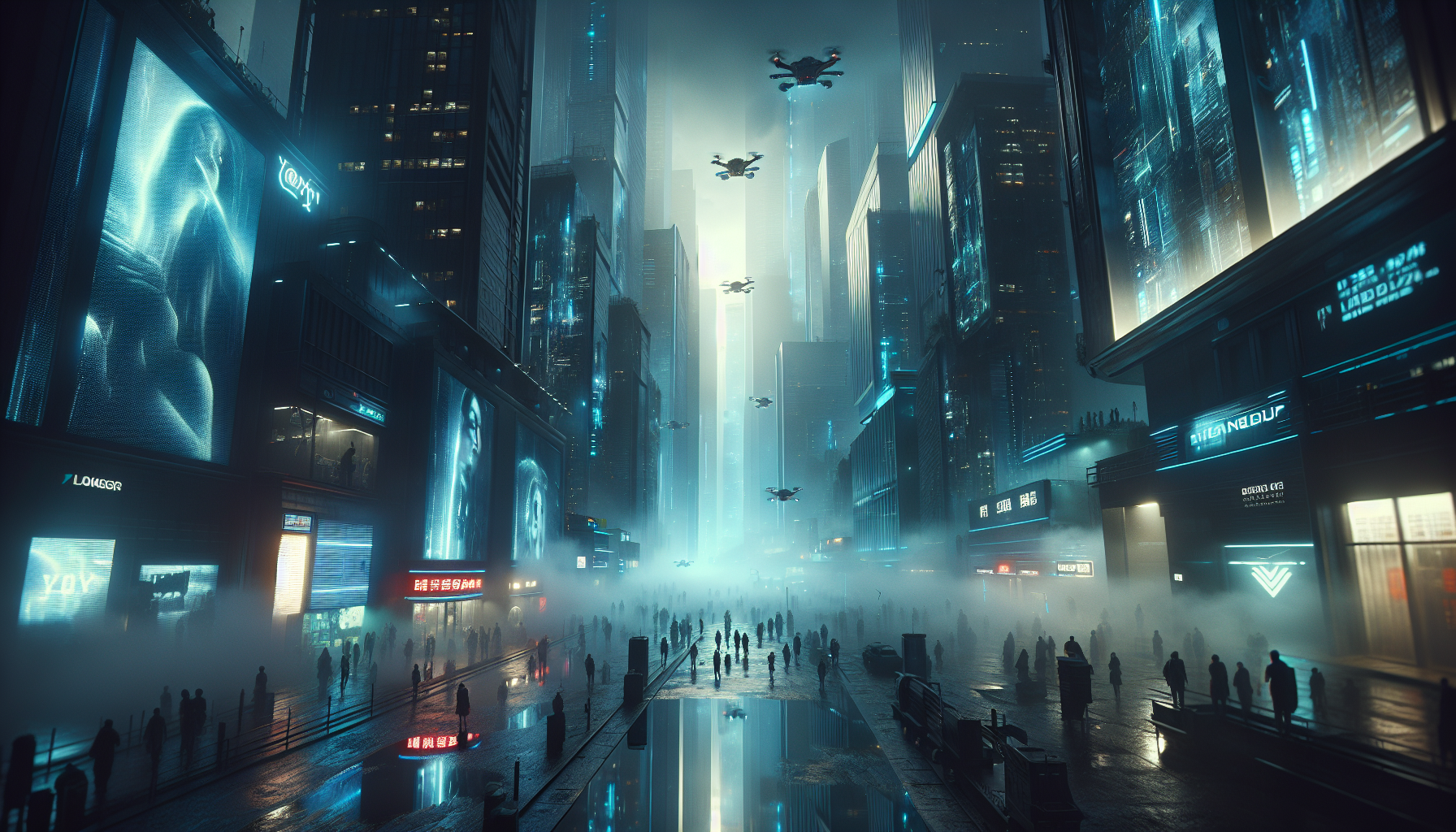
Conclusion
In conclusion, the exploration of dystopian themes in contemporary media, from magazines to music videos and advertising campaigns, serves as a powerful testament to the captivating allure of dark visuals in modern storytelling. Throughout our analysis, we delved into how these forms of media effectively use dystopian aesthetics to engage audiences, provoke thought, and communicate complex societal issues.
To begin with, magazines have long been a canvas for artistic expression, often pushing the boundaries of visual storytelling. By incorporating dystopian elements, they create a narrative that challenges readers to question the status quo and explore the implications of a future where the world as we know it has drastically changed. This approach not only draws the reader’s eye but also immerses them in a speculative world that reflects our current societal fears and anxieties. Magazines like “Vogue” and “Wired” have successfully employed these visuals, transforming their pages into portals that transport readers to alternate realities, ultimately prompting them to reflect on the present.
Music videos, on the other hand, have a unique ability to blend sound and imagery, creating a multisensory experience that resonates with viewers on a profound level. Artists like Billie Eilish and The Weeknd have mastered the art of dystopian storytelling through their videos, using stark, sometimes unsettling visuals to amplify the emotional depth of their music. These videos often feature themes of alienation, technological domination, and societal collapse, serving as a mirror to our own world and the potential paths it may take. The impact of these videos lies in their ability to evoke strong emotions and provoke critical thinking, encouraging viewers to engage with the content beyond the surface level.
Advertising campaigns, too, have embraced dystopian visuals as a means of capturing consumer attention in a saturated market. By presenting products within a dystopian framework, brands can create a sense of urgency and relevance, appealing to consumers’ desires for innovation and resilience in uncertain times. Campaigns by companies such as Nike and Diesel have effectively used these themes to communicate messages of empowerment and adaptation, positioning their products as essential tools for navigating a rapidly changing world.
The overarching significance of dystopian visuals lies in their ability to captivate and engage audiences through a shared understanding of uncertainty and change. In a world increasingly characterized by rapid technological advancements and sociopolitical upheaval, these narratives offer a means of exploring potential futures and the consequences of our actions today. They encourage audiences to confront uncomfortable truths and consider the broader implications of their choices.
As we reflect on the power of dystopian visuals in media, it is essential to recognize their role in fostering critical discourse and inspiring change. These narratives challenge us to envision alternative realities and, in doing so, empower us to take action in shaping a better future. By engaging with these themes, whether through reading, watching, or sharing, audiences can become more informed and proactive participants in their own stories.
We invite you, dear reader, to continue exploring these themes and consider how they resonate with your personal experiences and perceptions of the world. Share your thoughts and insights in the comments section, or engage in discussions with others to deepen your understanding. By sharing this article with friends and colleagues, you can help spread awareness of the powerful role dystopian visuals play in modern media, and inspire others to engage with these thought-provoking narratives.
In a world that often feels uncertain, these stories remind us of our capacity to imagine, adapt, and create. Let us embrace the power of dystopian dreams, not as harbingers of doom, but as catalysts for innovation and hope. 🌍
For further reading and to delve deeper into this fascinating topic, we recommend exploring resources such as:
1. “The Power of Visual Storytelling” by Ekaterina Walter and Jessica Gioglio –
2. “Dystopian Fiction: An Introduction” by M. Keith Booker – Link
3. “How Music Videos Communicate: Visions of the Dystopian Future” – Link
Thank you for joining us on this exploration of dystopian dreams. Let’s continue to dream, discuss, and create a future that reflects our highest aspirations.
Toni Santos is a visual storyteller and artisan whose work reimagines fashion in the aftermath of civilization. Exploring the aesthetics of survival, decay, and resilience, Toni crafts wearable narratives shaped by a post-human world — where utility meets myth, and remnants become ritual.
Drawn to the raw beauty of collapse and adaptation, Toni’s creations emerge from imagined futures and forgotten pasts. Torn fabrics, corroded metals, and salvaged textures form the foundation of a style that speaks not just to what is worn — but to what has endured. Each piece tells a story of transformation, of identity reshaped by ruins and time.
Through garments, accessories, and visual compositions, Toni constructs a language of dress where fashion is not decoration but declaration — a symbol of survival, memory, and the human spirit persisting in desolation. With a background in visual design and handcrafted techniques, Toni blends precision with provocation. His works are tactile philosophies, designed to be worn, felt, and remembered.
As the creative voice behind Vizevex, Toni shares a vision of fashion as post-civilization mythology — offering curated collections and visual essays that explore the line between relic and garment, artifact and identity.
His work is a tribute to:
The resilience encoded in fabric and form
The symbolic armor we craft in the face of extinction
The beauty found in fragmentation, rust, and reassembly
Whether you are an artist, a futurist, or someone drawn to the aesthetics of survival and reinvention, Toni invites you into a world where fashion becomes memory — one stitch, one scar, one future at a time.


